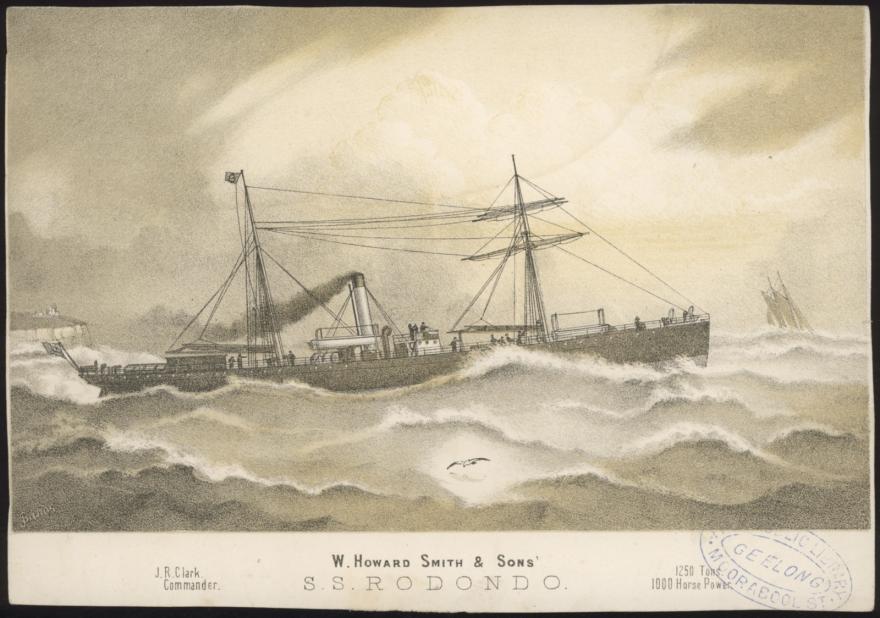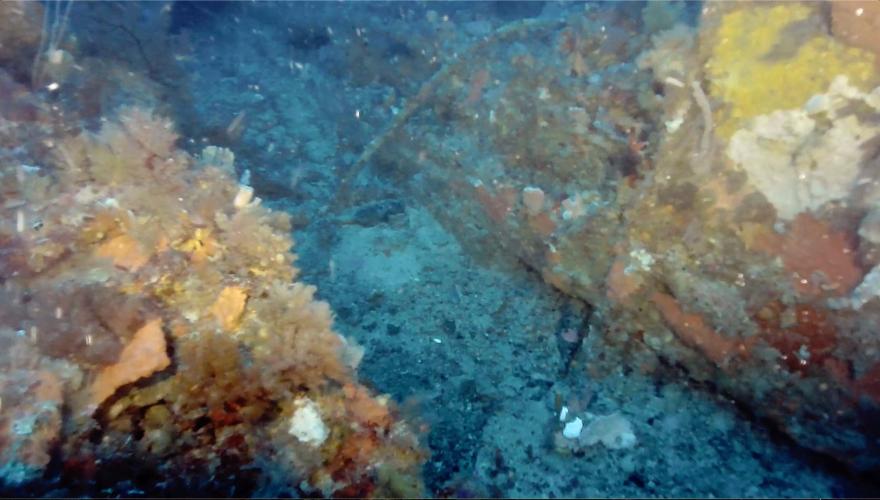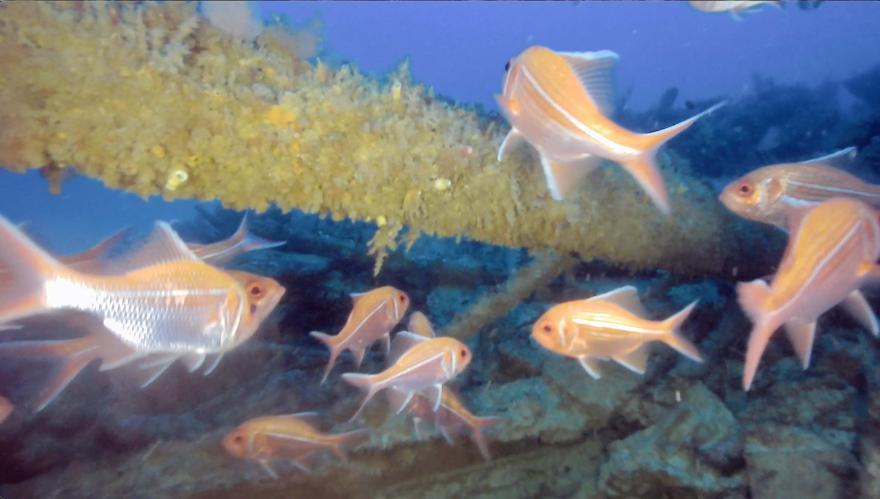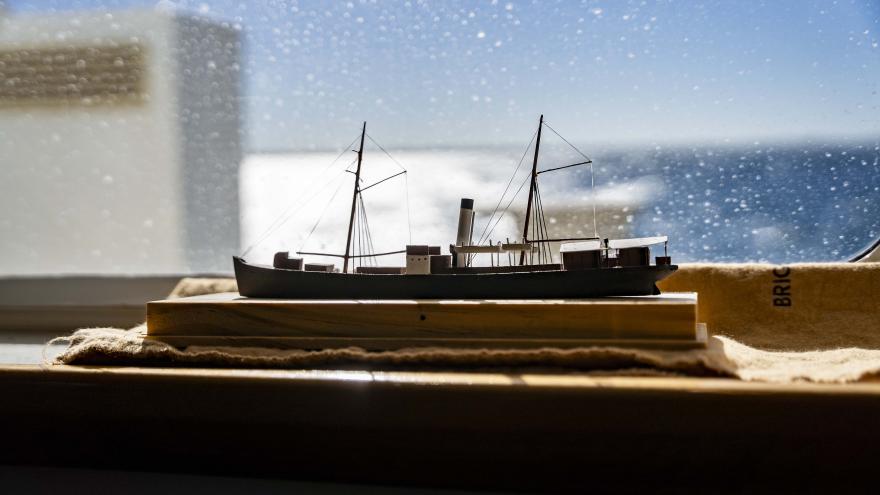Ship
Country of Origin
UK
Built
Liverpool
Rig
Steamer, Schooner-rigged
Tonnage (Gross)
1119.00
Port Departed
Port Adelaide
Port Destination
Western Australia
Wrecked
Pollock Reef
Discovery
Primary finders: Ryan Chatfield, Anouska Freedman, Johnny Debnam, Andre Rerekura (Shipwreck Hunters Australia, Deb Shefi, Ross Anderson (WA Museum), Marc Payne, Annie Boyd, Alasdair Cooke (Maritime Discovery Group). Secondary finders: Daemon Bass, Jono Stewart, Darren McCagh, Rhys Jones, Jason North
Protection
Commonwealth Underwater Cultural Heritage Act 2018
History
Between 1892 and 1893, news of major gold discoveries in Coolgardie and Kalgoorlie, Western Australia, enticed thousands of hopeful gold seekers from the east coast of Australia to head west to seek their fortunes. Most travelled by sea, landing at Esperance, Albany or Fremantle, then walked several hundred kilometres inland to the Goldfields.
East coast steamship companies hurried to divert their ships from their regular routes to steam to Western Australia to cater for the booming passenger and cargo trade.
Ordered and built for the William Howard Smith Company, Rodondo—a 1,119-tonne, schooner-rigged, single-screw inter-colonial steamship—was one such vessel. Noted as one of Australia’s finest coastal steamships, Rodondo steamed ahead on its first voyage to Western Australia.
After taking on passengers at Brisbane and Melbourne, the steamer departed Adelaide on 2 October 1894 under the command of Captain Henry Edward Hill, with a crew of 36 and 164 passengers, including four women and two children. In addition to those bound for the western gold rush, Rodondo carried a general cargo and a 7-tonne winding and pumping engine for use in the Western Australian gold-mining industry.
The engine was placed on the port side deck, 16 ft (4.88 m) from the compass on the ship’s bridge. The gold mining company’s engineer, T.F. Marchant, was also a passenger on board. Rodondo was fully insured with Lloyd’s of London, and the cargo that had been loaded in Sydney was insured with the Sydney office of Lloyd’s for £720. The engine destined for the gold mine at Cue was also fully insured.
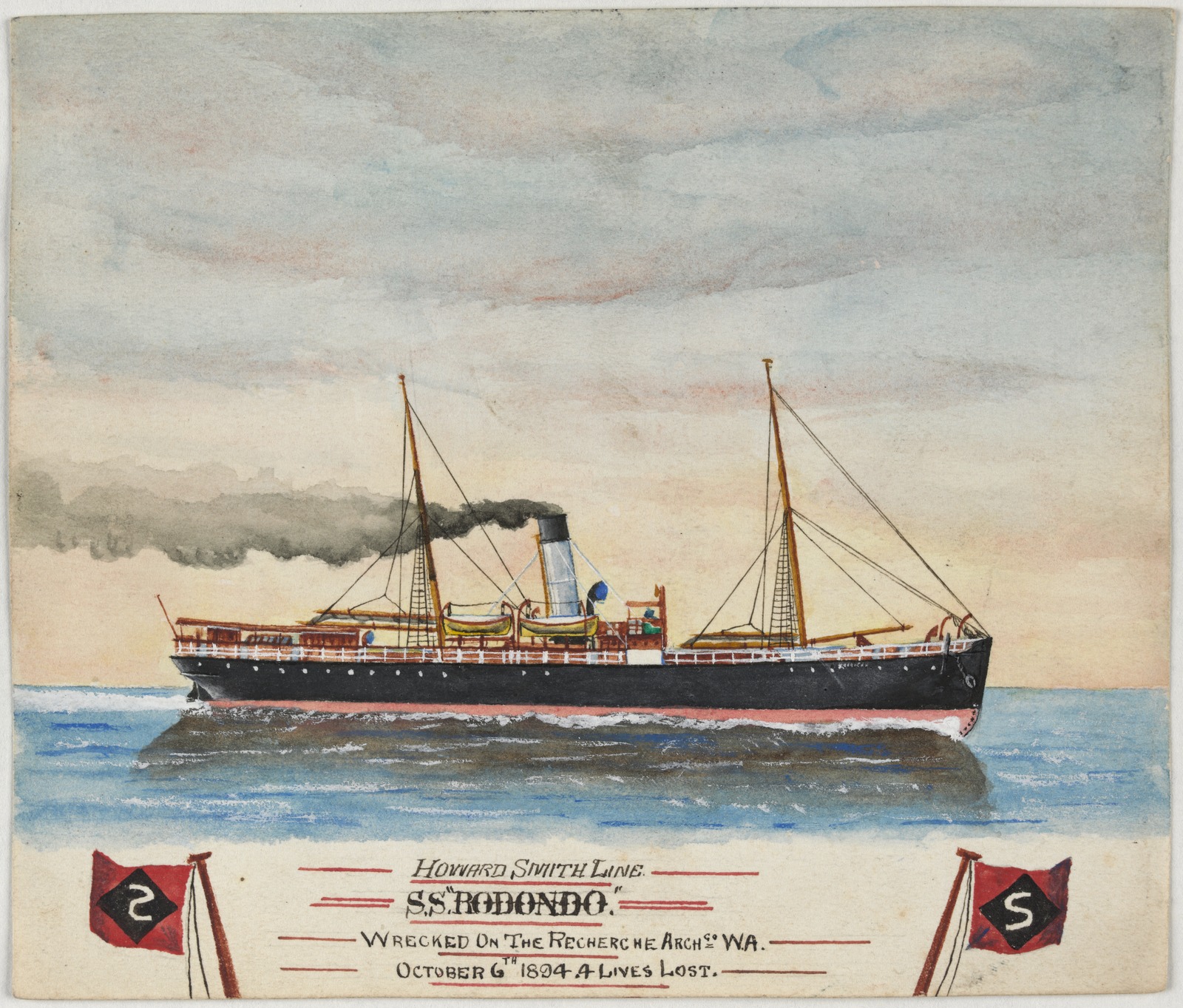
Shipwreck
After leaving Adelaide on 2 October 1894, Rodondo rounded Cape Spencer. Captain Hill was aware of an easterly variation in the vessel’s compass but did not think the winding and pumping engine, lashed down as deck cargo, affected navigation. He took his departure from the Neptune Islands, steering west by south — a course that should have cleared Pollock Reef in the Archipelago of the Recherche by 36 miles. However, his course after leaving South Neptune Island led directly toward Pollock Reef.
Shortly before 2.00 a.m. on Sunday 7 October in smooth water, Rodondo, with the second mate, John Francis Le Maistre on watch, struck Pollock Reef. The ship was loaded in such a way that the bow sat higher than the stern, and it struck the reef about amidships.
Captain Hill ordered the engines stopped — and soundings in the aft wells showed that the ship was taking on water rapidly. All hands were ordered on deck, and the lifeboats were prepared. In a very short time, the water in the after hold was up to the ‘tween deck. There was panic among some of the passengers, who rushed for the lifeboats. This resulted in the collapse of the davits holding the starboard forward lifeboat, pitching the occupants into the sea. Although 14 lives were saved from the water, between four and eight drowned. The lifeboat was recovered, and the other boats were lowered safely.
As they departed Rodondo, most on board were poorly clad, many in night dress, and very cold and wet. One of the children, an infant, had been fastened to a lifebuoy and thrown to a seaman. He caught the lifebuoy, but the infant fell into the sea. Although immediately rescued, the child was in a ‘sickly condition’ because of the immersion.
By this time, Rodondo had carried on over the reef, and Captain Hill attempted to make for the South East Isles, intending to beach the vessel. However, the steering gear failed, and about 12 hours after striking, Rodondo foundered—sinking stern first about two miles north-east of those islands. By noon, all the survivors had landed on one of the South East Isles using seven lifeboats and two rafts.
Note: Various newspapers refer to both ‘South East Island’ and the ‘South East Isles’. The South East Isles are a group of islands and reefs south-east of Esperance, of which only Salisbury and Cooper Islands are of any size. As there is no ‘South East Island’, it was most probably either Salisbury or Cooper Island (most likely the former) where Captain Hill intended to beach Rodondo and on which the survivors landed. The newspapers reported that the island on which the survivors landed was one of the very few on the coast with water to be found. However, as it was also a rocky island with no beach, the task of taking off survivors in small boats was very hazardous. The Admiralty Pilot dated 1973 states that the area has not been surveyed. It also reports that Pollock Reef is often very difficult to see ‘beyond the distance of 1 mile owing to the break on the reef being very similar in appearance to the ordinary breaking waves in the vicinity’ (Pilot, Vol. I, 1973: 48).


